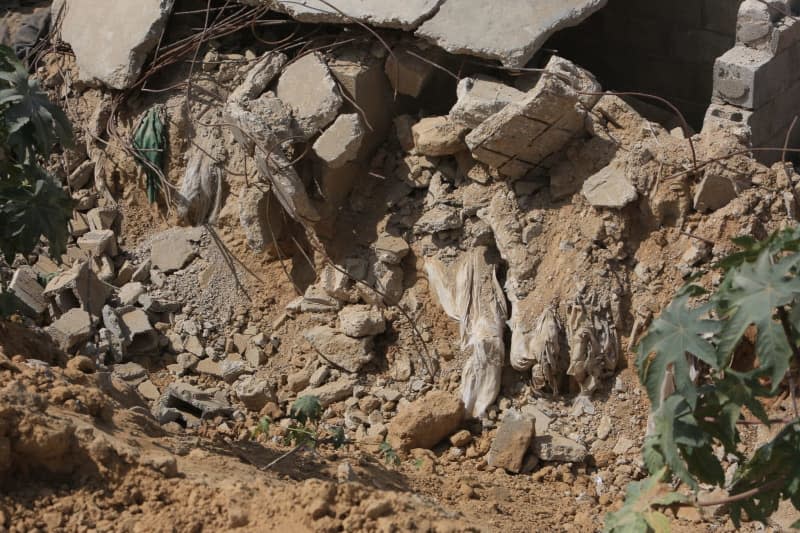Dozens of bodies have been recovered from Khan Younis in the southern Gaza Strip following the Israeli withdrawal there, according to Palestinian reports.
A spokesman for the civil defence, which is controlled by the Palestinian Islamist Hamas movement, said on Tuesday that 42 bodies had been found in Bani Suhaila in the east of Khan Younis.
The media office, which is also controlled by Hamas, announced that 255 people had been killed and around 300 others injured within eight days. There are also missing persons. It did not say how many were Hamas fighters and how many were civilians.
The information cannot be independently verified.
The Israeli army previously announced that it had withdrawn from the area just over a week after the start of a new military operation in Khan Younis.
Within a week, the soldiers had “eliminated over 150 terrorists, dismantled terror tunnels, weapons storage facilities, and terrorist infrastructure, and located weapons,” the army said.
The offensive began a week ago after, according to Israel, Hamas fighters had reorganized themselves in the city. The operation was also aimed at recovering the bodies of five Israeli hostages, which it did.
Thousands of civilians once again fled the urban area. The Israeli military had been active against Hamas combat units in the city previously on several occasions and over longer periods. It had then withdrawn to fixed positions outside the city.
The army also announced that the air force had killed a Hamas member who had been responsible for anti-tank missiles in the Hamas battalion in Nuseirat in the central part of Gaza.
He was behind numerous attacks on Israeli troops and had been a “central source of knowledge on anti-tank missiles for Hamas,” the army said.
Separately, the World Health Organization (WHO), said a polio vaccination campaign is needed in the Gaza, but a ceasefire is required for this to happen.
The virus, which can cause polio, has been discovered in sewage samples from the coastal strip. There is therefore a very high probability that the pathogen is present in the population, said WHO spokesman Christian Lindmeier in Geneva.
Experience has shown that around 70% of people with polio are asymptomatic, he said, adding that there does not appear to be a polio outbreak in Gaza now.
But the WHO spokesman stressed the need for preparation and an immunization campaign – “and for that we need a ceasfire.”
On July 23, the Israeli military said it had started to vaccinate its forces against polio, as well as transporting vaccines to the territory. It said 300,000 doses have been delivered since October 7, when the current war started after Hamas and others attacked Israel, killing 1,200 people and taking some 250 hostage.
The Hamas-controlled health authority in Gaza has estimated that more than 39,000 people have been killed and more than 90,000 injured since the war started.
Meanwhile, in Israel, the country’s defence minister, Yoav Gallant, strongly condemned violent protests which broke out there on Monday after soldiers on a military base were detained by police on charges of sexually abusing a Palestinian prisoner.
Demonstrators broke into the Sde Teiman prison camp near the desert city of Beersheba, where nine soldiers were detained on Monday amid clashes with military police after a Palestinian prisoner was reportedly hospitalized following serious sexual assaults.
The Sde Teiman prisoner camp houses fighters from an elite Hamas unit. Thousands of Palestinians are being held in Israeli detention facilities.
The human rights organization Amnesty International recently accused Israel of mistreating and torturing Palestinian prisoners from Gaza.
In a letter to Prime Minister Benjamin Netanyahu, Gallant wrote that the protests represent a “serious threat to state security” and called on him to “take tough action against coalition members who were involved in the unrest.”
Gallant also called for an investigation into whether the far-right Police Minister Itamar Ben-Gvir deliberately prevented police forces from taking action against the perpetrators of violence.









